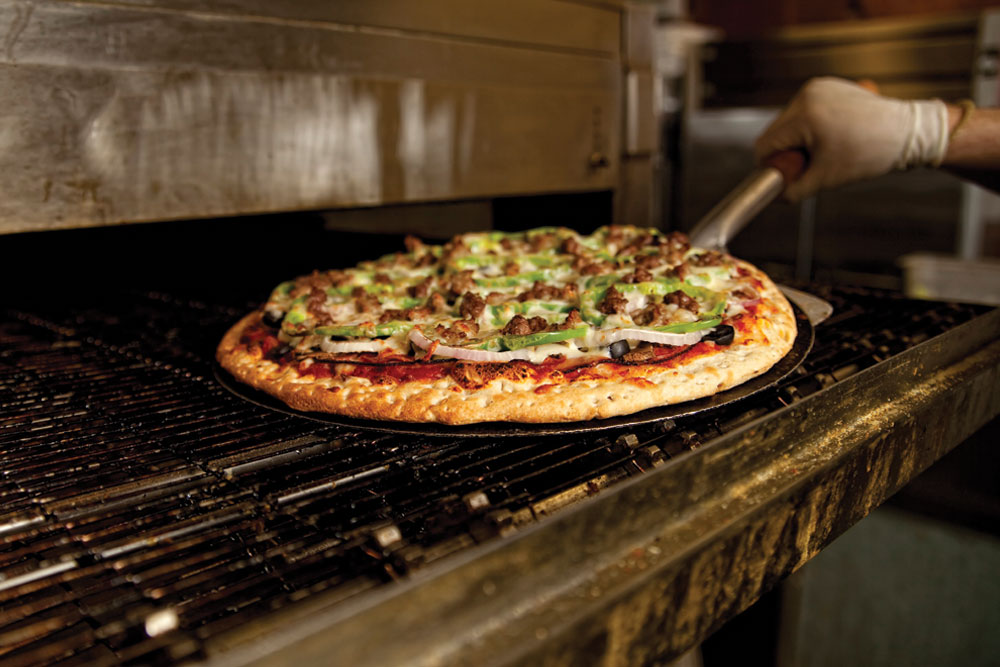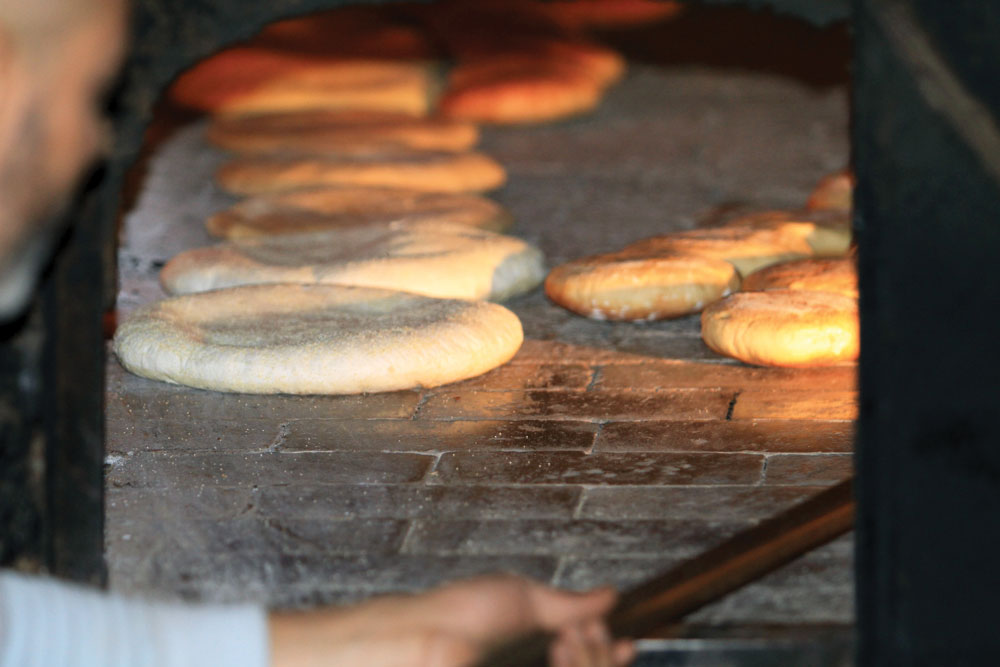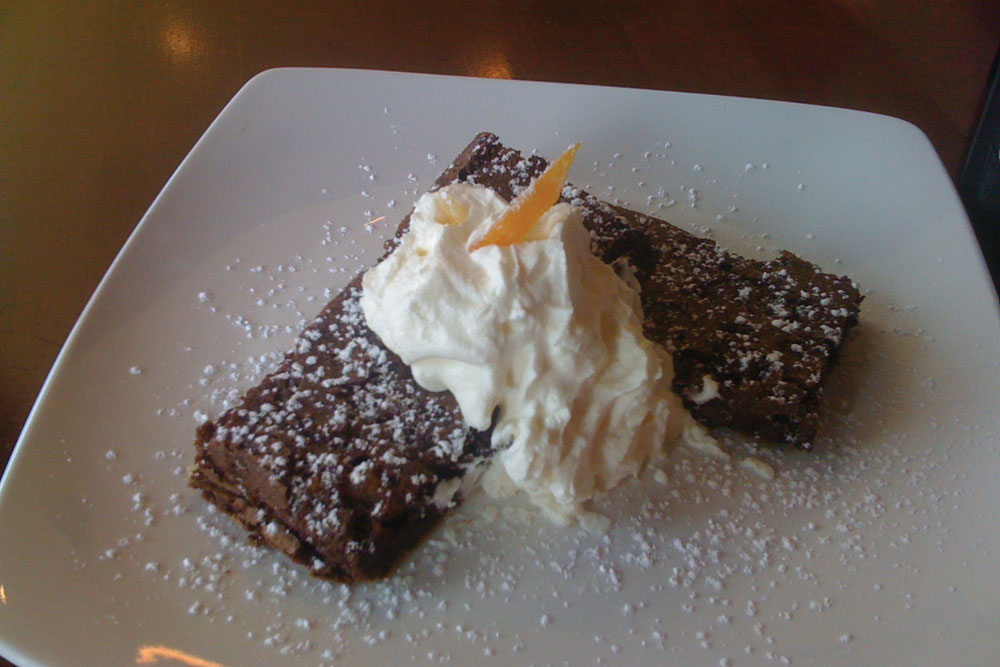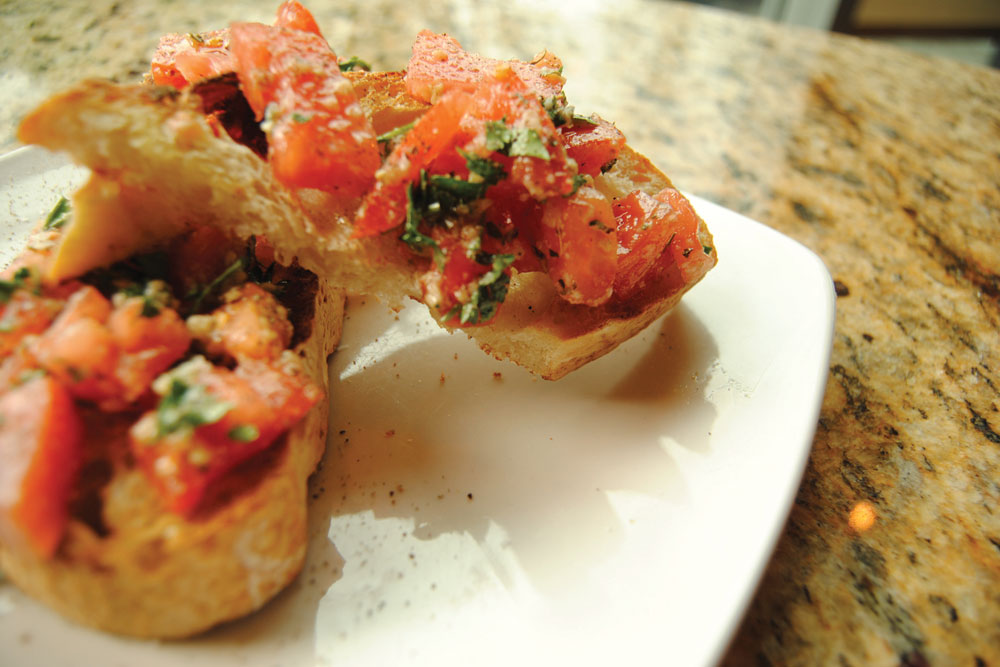Your oven is one of the most important—and expensive—pieces of equipment in your pizzeria. And, while it’s a given that you’ll be churning out mouthwatering pizzas with this vital device, you also want to make sure that you get the most out of your investment by broadening its output. Luckily, when whipping up mouthwatering appetizers, hearty entrees or tantalizing desserts, today’s ovens prove incredibly versatile, whether you have a conveyor, deck or wood-fired model. We chatted with oven experts and operators alike to gather ideas about how you can use your most essential piece of machinery to expand your business’ menu—and generate blazing-hot profits.
 |
|
Conveyor ovens allow you to cook virtually anything from pizzas, hoagies and pastas to steaks and cookies. |
Start and Finish
When patrons need a prepizza snack (or a postpizza finisher), you’ll want to offer them both creative and familiar options, but don’t be afraid to think outside the deep-fryer. “Appetizers and desserts are a great way to diversify your menu and increase check averages, and if you can do that in your pizza oven, all the better,” says Pam Burisky, ops/training specialist for Dallas-based Ovention Ovens. “You can bake a wide variety of items, especially when you have the flexibility to adjust temperatures, top and bottom heat, and time.” For example, she says, a versatile impingement oven can cook appetizers such as macaroni-and-cheese bites, stuffed ravioli, spinach-and-artichoke dip, stuffed mushrooms, roasted vegetables, pastries and more.
Indeed, temperature flexibility has been a great asset for Jeff Varasano, owner of Varasano’s Pizzeria (varasanos.com) in Atlanta. He utilizes a three-deck electric oven with controls for adjusting top versus bottom heat. And because he typically uses no more than two decks for pizza, the third deck can be set to a lower temperature for nonpizza items. “We make so many meatballs that it’s not practical to pan-fry them anymore, so we bake them in sheet trays in the oven,” he explains. “The same goes with our sausage. For dessert, we bake dark-chocolate orange brownies and the occasional cake for a special occasion. I’ve even been known to pop in a few trays of Popovers for special brunch guests, and they’re amazing!” Varasano also uses the ovens for dough-based nonpizza items: oblong loaves of bread (used for grilled sandwiches, French toast, crostini and croutons), hero rolls, pocket breads and calzones.
Meanwhile, Jason Hague, owner of Bada Bing! Pizzeria (badabingpizzeria.com) in Springfield, Ohio, has found that his traditional deck oven allows him to cook a variety of items—in fact, it’s the only piece of cooking equipment he has in the kitchen. “Other than pizza, we bake our garlic knots, grinders, pastas, chicken wings, calzones, pepperoni rolls and garlic cheese sticks in the oven,” he says. “We also bake our own bread for our grinders, and we bake cookies in the oven right after we fire it up.”
|
|
|
Decadent desserts can be easily whipped up in a variety of oven types. |
Obviously, versatility is a top selling point for modern ovens, and infrared models can be used to cook just about anything, according to Jim Chapman, vice president and business unit manager at Prince Castle in Carol Stream, Illinois. “Infrared ovens blow no air, keeping ingredients moist and crisp; you can even cook frozen appetizers inside,” he notes. “With infrared technology, time is more important than temperature, so you simply fluctuate the time according to what you’re cooking.”
Romano Moretti, inventor at Remco Specialty Products in Fort Lauderdale, Florida, agrees that infrared ovens quickly and thoroughly cook a variety of appetizers, including some best-selling American mealtime accompaniments. “You can cook raw, fresh chicken wings in five minutes, without using any fats or oils,” he says. “Most French fries are 80% cooked, so you can simply finish them in the oven without frying for a healthier product.” Baked goods, including bread, rolls, cakes, pies and muffins, are additional infrared options. Moretti simply advises that chefs test-cook their different items and chart timing in order to forecast cooking cycles, while features such as built-in ventilation can prevent cross-contamination of odors (meaning you can safely bake a cake next to a piece of salmon).
For keepers of the flame, of course, nothing beats a wood-fired experience. However, since these ovens can require more tending than other types, smart planning is a must. “At The Roosevelt New Orleans, chefs use rotating wood-fired ovens to prep ingredients, and they love the equipment because they can do everything—baking bread in the morning, roasting peppers and meats, and caramelizing onions,” says Peter deJong, president of Fired Up Kitchens in Bedford, New York. “During prep, the ovens run at lower temperatures so the products don’t dry out—and then, during business hours, the ovens run at higher heat just to finish products as they’re ordered. I would recommend that if you’re running a full menu out of one wood-fired oven, prep at one temperature and later finish off at another.”
Wood-fired ovens are also ideal for bread making. Scott McMiller, owner of Fire Pie Oven Company in Troy, Ohio, regularly caters parties and has found that breads are best cooked with a wood-fired oven at 300° to 350°—a warm, not hot, temperature—so he’ll put in loaves as his parties are winding down. For simple appetizers, he’ll roast entire bulbs of garlic until the cloves can spread on bread like butter, or cook shrimp and garlic in a ceramic dish that withstands high heat. For dessert, he’ll cover a pizza pan with a dozen graham crackers and marshmallows, then top the cooked result with broken bits of chocolate. “The first human way of cooking was with fire, so you just need to tame it and learn through experience,” he advises. “When you know the basics of cooking, the bottom line is common sense!”
Fortunately, some ovens on the market help eliminate human error through technology. “Making adjustments for nonpizza items has always been a big challenge; it requires a lot of trial and error, depending on recipes, and close attention of skilled labor,” says Burisky. With some modern ovens, she adds, “Now you can preprogram a touch screen for your product menu, and you don’t have to think about adjusting the temperature or position. And, with the right design, you can adjust from a set temperature instantaneously—so the oven can have a set temperature of 465°, and then you can cook a product up to 50° higher or lower by entering the cook settings, without any downtime.”
Enter the Entrees
| Tips From the Dough Doc |
|
Tom “The Dough Doctor” Lehmann may be elbow-deep in dough every day, but as an industry consultant and director of bakery assistance for the American Institute of Baking in Manhattan, Kansas, he also knows his way around an oven. Try some of his ideas for prepping common nonpizza items:
|
If you’re pressed for time during a dinner rush, fast-cooking ovens can be crucial, and Moretti notes that infrared ovens are great for cooking typically time-consuming meat-based entrees. “You can cook 12-ounce steaks, fish filets and chops in a few minutes, or try chicken breasts and ribs,” he says. “You can also steam vegetables for sides by putting a perforated insert on top of a pan with water, which doesn’t leach out their color like other methods might.” Roasting, poaching, blanching and grilling (with the aid of a grill plate) are also possibilities—or, for sandwiches, use panini grill plates or toast Philly cheese steaks.
Wood-fired ovens can also be used to create main-course magic. McMiller often whips up “steak on a stone”—heating a slab of soapstone, which withstands high heat, and placing a steak on top; the stone gets hot enough to actually cook outside the oven (in fact, it’s still cooking when he serves it). His other favorites include cedar plank salmon with capers and white sauce; hamburger patties stuffed with cheese and onion; fried chicken in a skillet; and even Thanksgiving turkeys. “I haven’t found anything it’s not good for cooking—just whatever your mind can create,” he says. “I use a heat gun to determine the floor temperature of the oven, and after time, just by feeling the radiant heat, you begin to learn when to add more wood as you cook.” McMiller starts with smaller pieces of wood to build up a bed of coals, and the oven reaches temperature in about 45 minutes.
Though wood-fired ovens can be “a go-to for most menu items,” says Randie Hovatter, marketing director for Marra Forni in Beltsville, Maryland, “some foods need to be placed in a pan to heat, rather than directly on the oven deck.” She offers clients this additional advice: Because some brick ovens have fast cooking times, keep the oven’s heat source on the same side of the oven as the prep area, so that an employee can always be at the correct viewing angle to monitor what’s cooking in the oven as he manages other tasks.
Heat Control
High heat can be temperamental, especially with deck and wood-burning ovens that reach temperatures of more than 600°, concedes Tom Lehmann, director of bakery assistance for the American Institute of Baking in Manhattan, Kansas. “There are also hot and cold spots in the oven, so you have to be more careful,” he adds. “But it definitely doesn’t limit your possibilities.” Other heat-controlling options: Use double pans to create an insulating layer or put the item on a screen on the oven’s deck to create an air gap underneath.
For a more controlled cooking environment, many operators turn to conveyor ovens, which also offer plenty of versatility. Mike French, co-owner of Dunbar, Pennsylvania-based MF&B Restaurant Systems, manufacturer of Edge Conveyor Ovens, has seen them work in everything from Tex-Mex restaurants to bagel chip manufacturing facilities. “You can cook just about anything, as long as it meets height requirements; something that rises higher than 3”, like a large bread, wouldn’t work,” he explains. “Otherwise, everything is possible—cookies, pastas, seafood, steaks. When you have a varied menu and are serving hoagies, for example, the conveyor is great.”
For example, if you’re cooking pizzas at a standard six-minute time, you can heat a hoagie and take it out at three minutes through a side window; or you can maximize production by running two belts set at different timings with a split conveyor belt oven.
As our experts illustrate, no matter what kind of oven you currently own—or are looking to buy—there are few limits to your potential as an operator, and it’s worth the effort to explore all of the possibilities. After all, your oven can increase your efficiency and ultimately make or break your business—and it’s not only about having the right oven; it’s about utilizing it to its fullest potential.





 Photo Courtesy of Varasano’s Pizzeria
Photo Courtesy of Varasano’s Pizzeria










